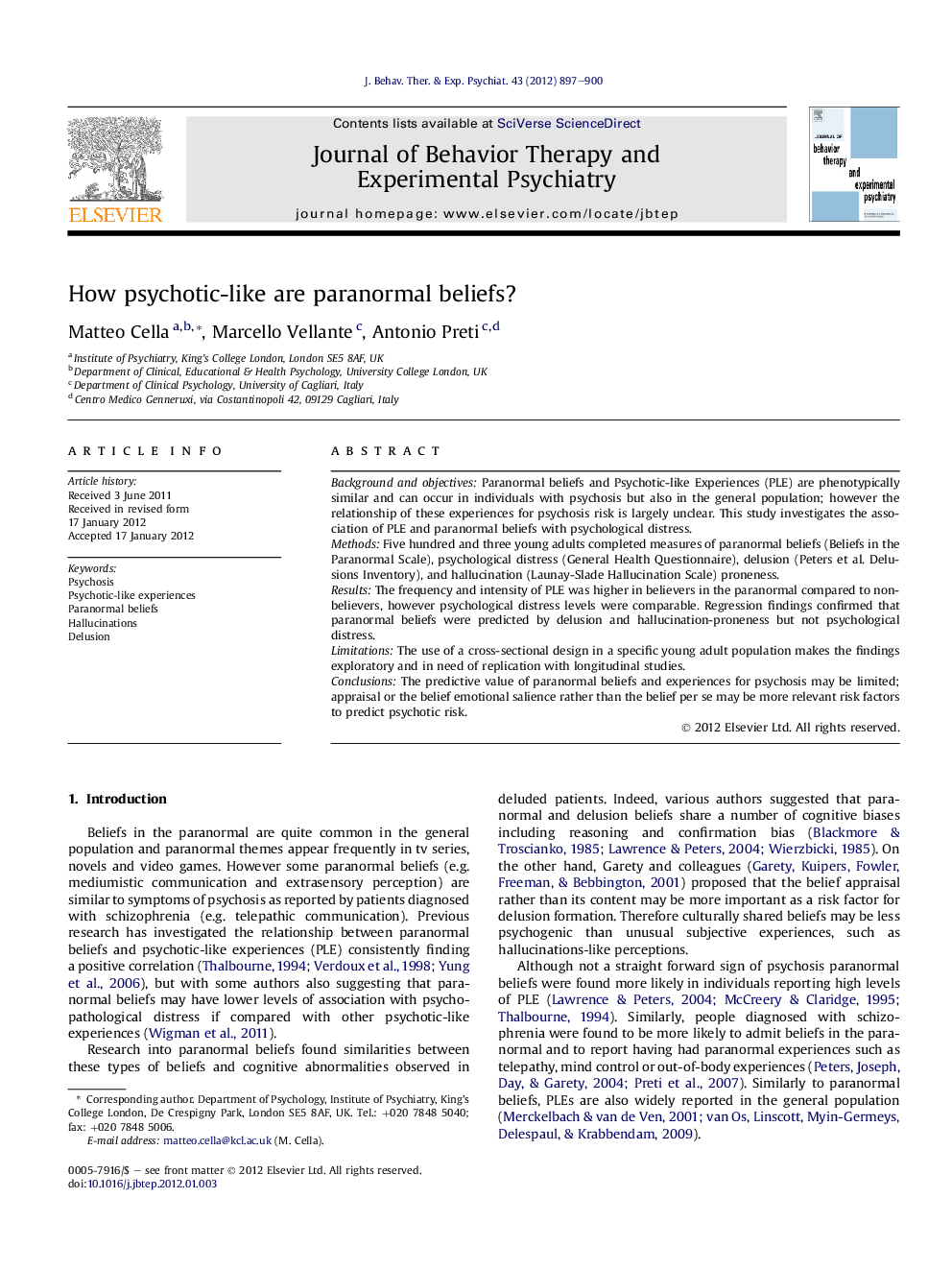| Article ID | Journal | Published Year | Pages | File Type |
|---|---|---|---|---|
| 910394 | Journal of Behavior Therapy and Experimental Psychiatry | 2012 | 4 Pages |
Background and objectivesParanormal beliefs and Psychotic-like Experiences (PLE) are phenotypically similar and can occur in individuals with psychosis but also in the general population; however the relationship of these experiences for psychosis risk is largely unclear. This study investigates the association of PLE and paranormal beliefs with psychological distress.MethodsFive hundred and three young adults completed measures of paranormal beliefs (Beliefs in the Paranormal Scale), psychological distress (General Health Questionnaire), delusion (Peters et al. Delusions Inventory), and hallucination (Launay-Slade Hallucination Scale) proneness.ResultsThe frequency and intensity of PLE was higher in believers in the paranormal compared to non-believers, however psychological distress levels were comparable. Regression findings confirmed that paranormal beliefs were predicted by delusion and hallucination-proneness but not psychological distress.LimitationsThe use of a cross-sectional design in a specific young adult population makes the findings exploratory and in need of replication with longitudinal studies.ConclusionsThe predictive value of paranormal beliefs and experiences for psychosis may be limited; appraisal or the belief emotional salience rather than the belief per se may be more relevant risk factors to predict psychotic risk.
► It is inaccurate to use paranormal beliefs to screen for psychosis risk. ► Paranormal beliefs are not pathological per se. ► Other mechanisms are more salient in influencing psychosis risk.
